
2014-et írtunk, amikor először léptem be a Virgo Dohány utcai irodájának kapuján. Egy kedves ismerősöm ajánlására érkeztem a céghez, első körben egy konkrét projektre. Emlékszem, mennyire izgultam az interjú előtt de elég hamar világossá vált, hogy ez nem a szokványos menet lesz: könnyed beszélgetés vette kezdetét, ahol azonnal elindult a közös gondolkodás és végül felvettek a csapatba
– kezdte Janó, amikor arra kértem, meséljen arról, hogyan került a céghez.
Az első feladatom a “svájci projectben” egy mobilalkalmazás egyedi grafikáinak és illusztrációinak a létrehozása volt amiket a UI designerekkel és frontendesekkel együtt dolgozva hoztunk lére. Nagyon élveztem, mert előtte csak szárazabb grafikai munkákat csináltam. A figurális elemeket amiket terveztem, humoros animációkkal mozgattuk meg, hogy az alkalmazás játékosabbá váljon.

Mi a legemlékezetesebb sztorid, a kezdeti időszakból?
Amikor új kollégák érkeztek a csapatba, a project manager általában a szakmai címükkel mutatta be őket: frontend fejlesztő, UX designer… Amikor hozzám ért nagyon elgondolkodott és végül azt mondta: „Itt van Janó, aki halakat rajzol”. Az egyik projektemhez ugyanis közel végtelen számú halat készítettem, amelyek különféle avatarokként és badge-ekként szolgáltak. 🙂
Mit látsz a legnagyobb változásnak az elmúlt 10 évből a Virgonál?
Az elmúlt tíz évben rengeteg minden alakult körülöttünk, és szerencsésnek érzem magam, hogy különböző csapatokban dolgozva szinte minden folyamatot közelről láthattam. A kezdetben “kreatív csapat”-ként működő team, 2015-re Virgo Kreatív néven önálló entitássá vált és amolyan laza alkotói műhelyként működött tovább. Minden reggelt úgy kezdtük, hogy önmagunknak mondogattuk: „nem vagyunk marketingügynökség”, noha sok tekintetben nagyon is hasonlítottunk hozzájuk.
Például, a UX akkoriban még viszonylag friss területnek számított, és gyakran nehéz volt az ügyfeleknek elmagyarázni, mit is takar valójában. Ma már ez jóval egyértelműbb, mindenki tudja miről van szó.
Később voltak összeolvadások, szétválások más cégekkel, rengeteg kísérlet és újító próbálkozás, amelyek néha kihívást jelentettek, de mindig izgalmasak voltak. Ezek a változások segítettek abban, hogy a csapat és a cég folyamatosan fejlődjön, új irányokat találjon, miközben megőrizte azt a kreatív és közösségi szellemet, ami miatt itt vagyok ennyi év után is.
2020-ban a COVID idején jött létre a Product Design csapat, és azóta hatalmasat fejlődtünk szakmailag. A piac is sokkal tudatosabb lett: ma már nem csak “dizájnos” felületeket kell tervezni, hanem használható, értékes digitális élményeket.”


Milyen mérföldkövek, projektek maradtak meg benned leginkább?
A 2020-as Virgo arculathoz rajzolt illusztrációs vonal abszolút a szívem csücske.
Addigra már sok éve csináltam ügyfeleknek különböző projekteken mindenféle menő dolgot, de a Virgónak sosem volt lehetőségem ennyire komplex, kreatív megoldásokat megtervezni, létrehozni. Azóta eljutottunk oda hogy pár illusztrációt meg is animáltam, meg lehet nézni őket a virgo.hu szolgáltatások alodalain. 🙂
Egy másik számomra emlékezetes projektem egy nyelvoktató szoftver, a Mindhero infovideója volt. Minden ideálisan alakult. Az animáció kezdetekor már létezett egy arculat és a váza a site designjának is és a kis kabalafigurát is elfogadták már aki egy antropomorf robot volt egy búrával a fején amiben ikonizálni tudtam a “gondolatait”. Az ügyfelünk nagyon aktívan részt vett már a forgatókönyv gyártásában is és ezáltal a félreértéseket és felesleges köröket egyaránt minimalizálni tudtuk.
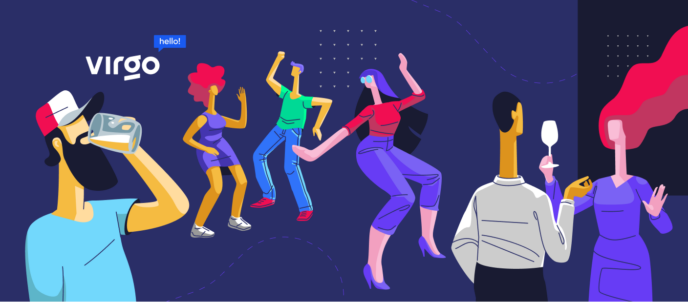
Szerinted mi az a három dolog, ami miatt érdemes 10 évnél is tovább maradni egy munkahelyen?
Az egyik legfontosabb, hogy mindig legyen lehetőséged fejlődni és megújulni a szerepedben.
A másik a változatosság. Ahogy a projektek és feladatok is folyamatosan változnak, az új helyzetek új ötleteket hoznak, így mindig izgalmas marad a munka.
És végül, de nem utolsósorban az emberek. Ha jó a csapat, ha vannak, akikkel együtt tudsz nevetni, gondolkodni, akár vitatkozni is, akkor a munkahely nem csak egy hely, ahol dolgozol – hanem egy közösség, ami miatt érdemes maradni.
Hogyan fejlődtél te magad ezalatt az idő alatt szakmailag/személyesen? Mi volt a legnagyobb kihívás, amit sikerült leküzdeni?
Keveset tudtam a fejlesztésről és a designerekkel vagy frontendesekkel való együttműködésről mikor a Virgóba jöttem, de idővel egymáshoz csiszolódtunk.
Voltak kihívások, de a csapat mindig nagy türelmet tanúsított felém és szépen belerázódtam a dolgokba. Sokat tanultam a rendszerben gondolkodásról a vizuális kommunikációról és hogy megpróbáljak az ügyfél szemével is tekinteni egy feladatra.
Nem kellett egyedül boldogulnom: rengeteget tanultam a kollégáktól, például az animációk alapjait is itt sajátítottam el. Ami pedig különösen sokat jelentett, az a közös gondolkodás és a csapat támogatása. Itt sosem volt ciki kérdezni vagy segítséget kérni, mindig találtam valakit, aki készséggel segített — legyen az fejlesztő vagy másik designer. Ez a nyitottság és tudásmegosztás tette lehetővé, hogy napról napra fejlődhessek.
Milyen támogatást kaptál a Virgotól sikereid eléréséhez?
A Virgo mindig megadta a lehetőséget és a bátorítást, hogy új területeket fedezzek fel. Nem volt probléma, ha valami elsőre idegen volt számomra – a lényeg az volt, hogy meglegyen bennem a vágy a tanulásra. Az accessibility témája is így került a látókörömbe: nemcsak tanulmányoztam a témát, hanem lehetőséget kaptam hogy részt vegyek a munkában. Most pedig azon dolgozom, hogy a tesztelés felé is szélesítsem a tudásom, és ebben teljes támogatást kapok. Kihasználhatom a tanulás, kísérletezés lehetőségét, valamint betekintést nyerhetek más csapatok munkájába is.
Ez a bizalom és rugalmasság szerintem óriási érték. A Virgonál ha érdekel valami, nemcsak engedik, hanem ösztönzik is, hogy próbáld ki, mélyedj el benne, és támogatnak az úton.
Mit tartasz most a legizgalmasabbnak a Virgon belül?
Kétségtelenül az AI térhódítása az, ami most nagyon izgalmas. Számomra azonban ez inkább egy eszköz, semmint a végcél. Az igazi kihívás az, hogy ezt az eszközt hogyan tudjuk felelősen és kreatívan használni, hogy valódi értéket adjunk az ügyfeleknek és a felhasználóknak.
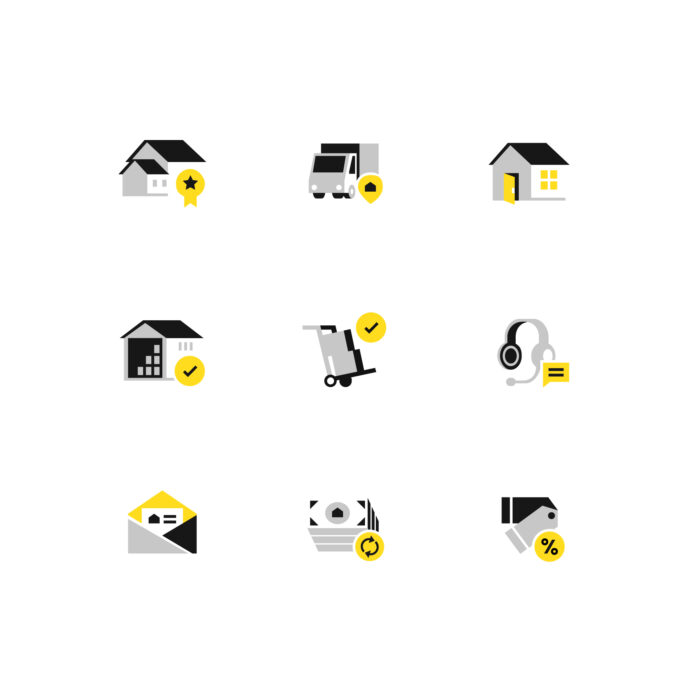
Milyen céljaid vannak még a cégnél?
Szeretnék tovább mélyülni az accessibility területén, hogy még inkább professzionális, mindenki számára elérhető élményeket hozzunk létre. Emellett érdekel a design és a fejlesztés közötti határvonal elmosása, hogy a folyamatokat még gördülékenyebbé tegyük.
Mit üzennél annak, aki most kezdi nálunk?
Annyit mondanék, hogy nyugodtan légy önmagad! Itt egy közvetlen, támogató közeg vár, ahol nincs túl merev hierarchia – mindenkinek számít a véleménye, és bárki hozzájárulhat a csapat sikeréhez. Ne félj kérdezni, tanulni, és legfőképp: örülj annak, hogy egy olyan helyen dolgozol, ahol nemcsak a munka, hanem az emberek is fontosak.
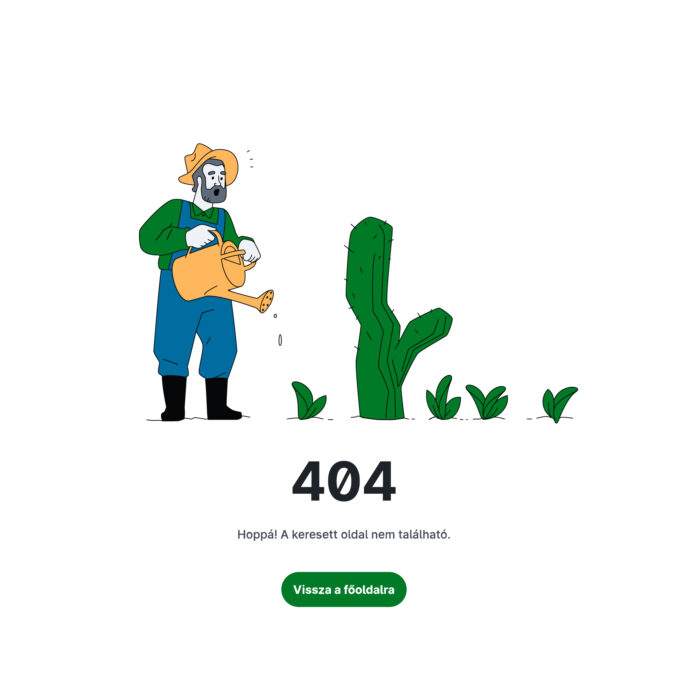
Szeretnél még több illusztrációt, animációt és karaktert látni Janótól? Itt találod a munkáiból válogatott összeállítást.

Néha úgy érzed, egyszerre vagy coach, tűzoltó és békebíró… Ismerős? Ha igen, nem vagy egyedül.
A munkahelyi kiégés, az érzelmi kimerültség nemcsak az orvosokat vagy szociális munkásokat érinti. A digitális világ kulcsszereplői – így a product ownerek – is nap mint nap komoly emberi, kommunikációs és döntési kihívásokkal néznek szembe. Egy 2023-as kutatás szerint a technológiai szektorban dolgozók 42%-a érzett már tartós mentális megterhelést a munkája miatt.
A klasszikus segítő szakmákban már régóta használnak egy eszközt az ilyen helyzetek feldolgozására: ez a szupervízió.
Mi is ez pontosan, és hogy került a Virgo-hoz?
A szupervízió egy strukturált, biztonságos keretek között zajló beszélgetés, amely során a résztvevők konkrét munkahelyi helyzeteket dolgoznak fel – érzelmi, kommunikációs és szakmai szempontból is. Segít megérteni a dinamikákat, kilépni a saját buborékból, és más nézőpontból ránézni egy-egy nehéz helyzetre.
A Virgo víziója ezzel kapcsolatban
A Virgo product owner szakmai közössége nyitott volt arra, hogy kipróbáljunk valami újat – így mentálhigiénés tanulmányaimra alapozva bevezettem ezt a módszert. Az első két alkalom visszajelzései alapján: működik. Sőt, még jobban, mint reméltük.
A visszajelzések rendkívül pozitívak: erősíti a csapatkohéziót, a módszertan elsajátítása mellett egymást is jobban megismerjük a gyakorlat során, együtt sikerül hajszálpontosan felvázolni a szituációt, módszeresen építkezünk a folyamat mentén, új megállapítások, különféle szempontok és megoldási lehetőségek merülnek fel.
Még az is lehet, hogy a product owneri munka is segítő szakma? A Virgoban mindenképpen van egy ilyen színezete is!
És akkor lássuk, nagy vonalakban hogyan zajlik egy ilyen esetmegbeszélő csoport.
Hogyan zajlik egy szupervíziós ülés?
Előkészítés: egy jó kérdés fél siker
Minden alkalomhoz kell egy vezető, aki tartja a folyamat kereteit – ez segíti a biztonságos, ítélkezésmentes légkört. A résztvevők előre gondolkodnak egy-egy olyan helyzeten, amely nehézséget okozott nekik. A csoport elején ezekből választjuk ki azt az esetet, amelyet aznap mélyebben megnézünk.
Már az is megkönnyebbülés, hogy végre kimondhattam egy problémát úgy, hogy nem kell megoldással is rögtön előállnom.
A feldolgozás: három körben
- Kapcsolódás
A többiek megosztják, mikor éltek át hasonlót. - Azonosulás
Belehelyezkedünk a másik fél szerepébe (pl. a főnökébe, ügyfélébe). - Ötletelés
Javaslatokat adunk, új nézőpontokat dobunk be.
Az volt a legmeglepőbb, amikor ‘a másik’ fejével próbáltam gondolkodni. Teljesen új megértés született.
Lezárás: az esethozó reflektál
Az eredmény szinte minden alkalommal az: megkönnyebbülés, új nézőpontok, tisztább kommunikációs stratégia.
Milyen helyzetek kerülnek elő?
Néhány konkrét példa a közelmúltból:
- Kommunikációs zárlat
Egy „semlegesnek” szánt email után napokig feszült hangulat lett a csapatban – a PO azt sem értette, mi történt. - Logolási vita
Az egyik csapattag következetesen nem vezette a munkaidőt, a PO pedig nem akart „ellenőrként” fellépni. - Kettős lojalitás
A PO felsővezetői nyomás és a csapat érdekei között őrlődött – „kinek az oldalán álljak?” dilemmával.
Ezek a történetek nem csak a PO-ról szólnak, hanem mindannyiunkról. A munkahelyi emberi kapcsolatok sokszor láthatatlan mintázatai itt újraértelmezhetők, sőt: javíthatók.
Miért működik?
A szupervízió lényege a tiszta figyelem. Nincs ítélkezés, nincs gyors tanácsadás – csak őszinte megértés. Ez az, ami a legnagyobb változásokat hozza.
Az utána következő hét olyan volt, mintha kioldódott volna bennem valami. Már nem akartam harcolni, inkább kérdeztem.
A módszer működik személyesen és online is. A közösségi élmény, a szakmai tanulás és az érzelmi támogatás egyszerre jelenik meg.
A munka menetéről, érdekességek
És hogy milyen esetekkel lehet dolgozni? Néhány általánosság az eddigi gyakorlatból: fellángoló konfliktus a felsővezetővel egy ártatlannak vélt email nyomán, feladatkiadási probléma egy tesztelési vezetővel, munkaidő-nyilvántartási (ún. logolás) konfliktusok, stb…
A dolog működik személyesen, és akár online is. Az esethozó többnyire érzelmileg feltöltve, szakmailag megerősödve távozik egy ilyen megbeszélésről. És gyakran arról számolnak be az érintettek, hogy az alkalom utáni napokban az ügy “bemozdul”, és előrelépések történnek.
Ez nem véletlen: a tiszta, ítélkezésmentes figyelem az egyik legerősebb hajtóerő, amely mindig jó irányba tereli a történéseket.

Have you ever felt like you’re simultaneously a coach, firefighter, and mediator? Sound familiar? If so, you’re not alone.
Burnout and emotional exhaustion don’t just affect doctors or social workers. In today’s digital world, key roles like product owners face daily challenges involving people, communication, and tough decisions. According to a 2023 study, 42% of tech professionals have experienced sustained mental strain due to work.
In traditional helping professions, there’s a long-established tool to help process such situations: supervision.
But what exactly is supervision—and how did it arrive at Virgo?
Supervision is a structured and safe-format conversation in which participants reflect on specific work situations—exploring them emotionally, professionally, and in terms of communication. It helps uncover dynamics, break out of personal mental loops, and view tough situations from new perspectives.
Virgo’s Vision
Virgo’s product owner professional community was open to trying something new—so, drawing on my background in mental health studies, I introduced this method. Based on feedback from the first two sessions, it works. In fact, it works even better than we hoped.
The feedback has been overwhelmingly positive: it strengthens team cohesion, and in addition to learning the method itself, we get to know each other better through the practice. Together, we map out the situations with great precision, build insights methodically, and discover new perspectives and potential solutions.
So maybe product ownership is a helping profession? At Virgo, it definitely has some elements of one!
So how does a supervision group work?
Preparation: A good question is half the battle
Each session has a facilitator who holds the framework of the process—creating a safe, non-judgmental space. Participants come prepared with a situation that was challenging for them. At the beginning of the session, we choose one case to explore more deeply.
It was such a relief to finally say a problem out loud without having to immediately offer a solution.
Processing: In three rounds
- Connection
Others share when they experienced something similar. - Identification
We step into the other party’s shoes (e.g., boss, client). - Brainstorming
We suggest new ideas and offer alternative perspectives.
The most surprising part was when I tried to think with ‘the other person’s’ mind. It gave me a completely new understanding.
Closing: The case presenter reflects
The result is almost always the same: relief, fresh perspectives, and a clearer communication strategy.
What kinds of situations come up?
Here are a few real-life examples from recent sessions:
- Communication Breakdown
A supposedly “neutral” email triggered tension in the team for days—the PO couldn’t even tell what went wrong. - Time Logging Conflict
A team member kept skipping work logs, and the PO didn’t want to act like a “monitor.” - Split Loyalty
The PO was torn between executive pressure and team interests—grappling with the dilemma, “Whose side am I on?”
These stories aren’t just about POs—they reflect all of us. The often-invisible patterns in workplace relationships can be reinterpreted here—and even improved.
Why does it work?
At the core of supervision is pure attention. No judgment. No instant advice. Just genuine understanding. That’s what brings the biggest transformations.
The week after the session felt like something had been released inside me. I stopped fighting—I started asking questions instead.
The method works in person and online alike. It combines the power of community, professional learning, and emotional support.
About the work and some interesting insights
What kinds of cases are suitable? Based on our experience so far: blow-ups with senior management over a seemingly innocent email, task delegation friction with a QA lead, recurring conflict over logging work time, and more…
This works well both onsite and remotely. The person presenting the case usually leaves emotionally uplifted and professionally empowered. Many report that in the days following the session, their issue “shifts,” and progress starts happening.
That’s no coincidence: focused, judgment-free attention is one of the strongest forces for moving things in the right direction.
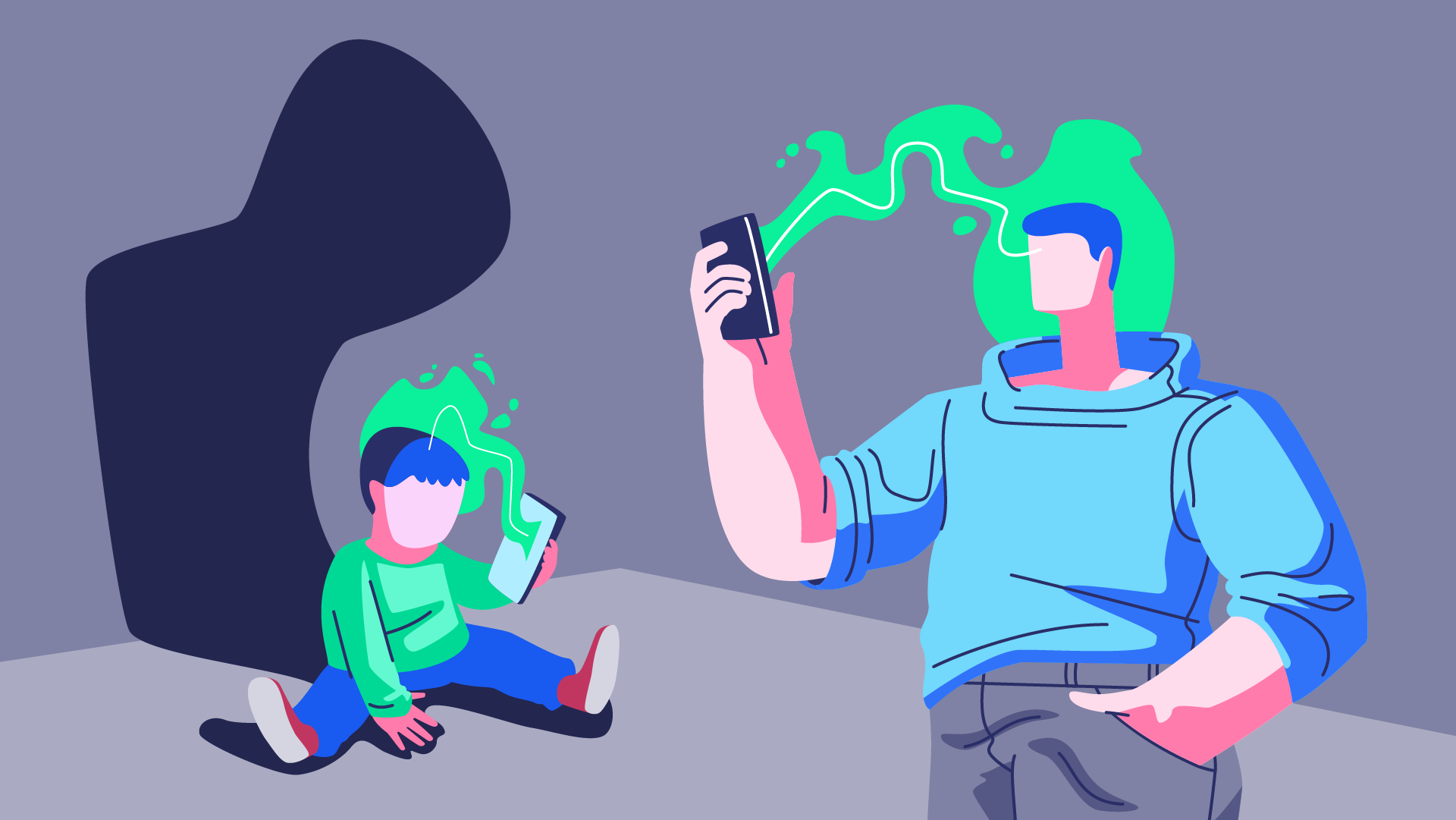
Mi ellen harcolunk valójában?
Nem a technológia ellen – hiszen most is azt használom, hogy ezt a cikket megírjam, és te is azon keresztül olvasod.
A technológia önmagában nem ellenség. De amint elkezd helyettünk dönteni, rólunk szólni – sőt, használni minket –, akkor ideje elgondolkodni. Akkor már nem „segédeszköz”, hanem a figyelmünk fő elvonója. És a kapcsolataink rovására megy.
Az igazi kihívás nem más, mint visszavenni az irányítást önmagunk felett:
- Megismerni, hogy mi az, ami elviszi a figyelmünket.
- Őszintén beszélni erről egymással.
- És újra jelen lenni – a gyerekeinkkel, a társunkkal, magunkkal.
Könyv, csend, lelassulás – és a valóság súlya
A beszélgetés elején Kapitány-Fövény Máté Ezerarcú függőség című könyvéből olvastam fel egy részletet – offline, kézben tartott könyvből. Egy lassú, befelé figyelő kezdés volt ez, ami már önmagában kontrasztban állt a megszokott ritmusunkkal.
Aztán jöttek a példák, amik már nem voltak ilyen csendesek:
Nálunk minden reggel ordítás, ha el kell tenni a tabletet.”
“Van, hogy a gyerek rám szól: ‘anyu, te is csak nyomkodod a telefonod’.”
„A fiam Fortnite-ban győztes, de a matekdolgozatnál nem áll szóba velünk.
Ezek nem statisztikák – ezek hétköznapi mondatok. Közös valóság.
„Gamer pelus”, neuroplaszticitás, Baby Shark – és mi magunk
A beszélgetés során olyan fogalmak is előkerültek, mint a neuroplaszticitás (az agy újrakábelezhetősége), a digitális bódulat, vagy épp a „gamer pelus” – a szülői döbbenet egyik szimbóluma.
Beszéltünk arról is, hogy nemcsak a gyerekeket érinti a függés: sokunknak nehéz nem ránézni a telefonra, ha csak öt másodpercnyi szünetünk van.
De nem a bűntudatra kell építeni a változást. A bűntudat ugyanis blokkol. A lassulás, tudatos jelenlét, és az őszinte kapcsolódás viszont erőt ad.
És hogyan tovább? – Pár konkrét tipp, ami elhangzott
- Szemkontaktus reggelente
Ne a telefon legyen az első, hanem a másik ember. - Offline zóna otthon
Egy közösen kijelölt tér, ahová nem visszük a kütyüket. - Telefonmentes sávok
Pl. étkezésnél, lefekvés előtt. - Közös digitális napló
Együtt vezetett kis füzet, ahol a családtagok rögzíthetik, hogyan érzik magukat „kütyüzés” közben és után. - Tükörtartás egymásnak
Megbeszélni, ha úgy érezzük, a másik túlságosan eltűnik a képernyő mögött.
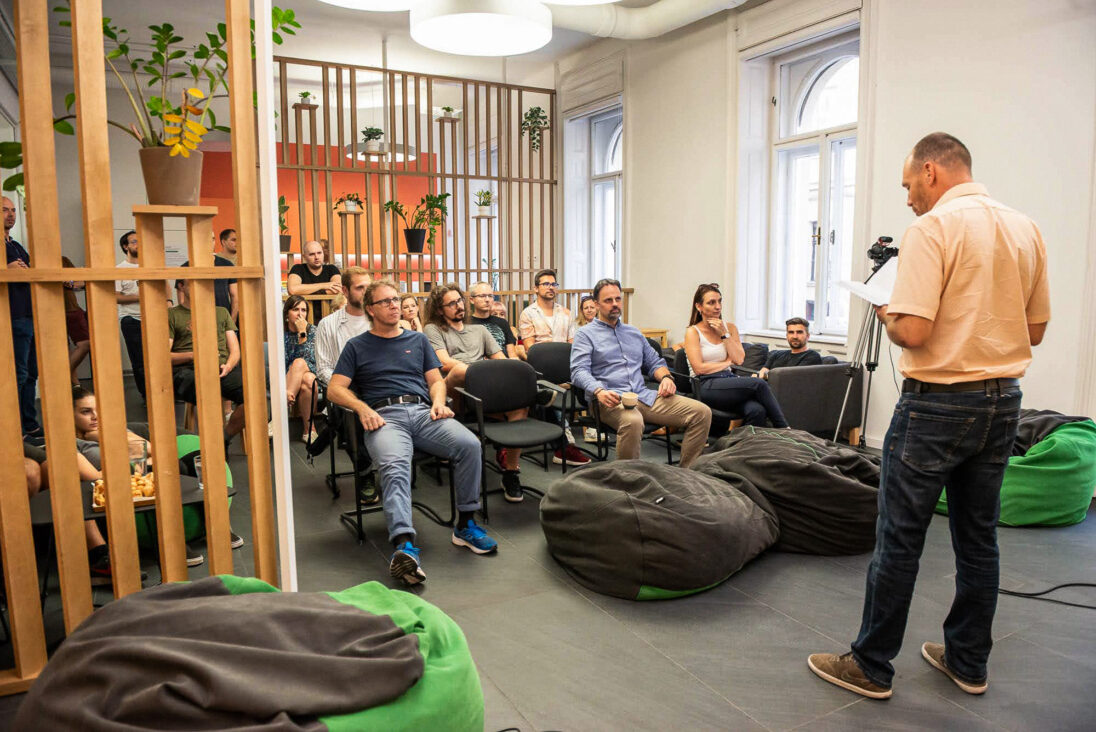
Egy cég, ami komolyan veszi a jövőt
Éppen ezért tartottunk egy meetupot a Virgoban, ahol a technológiai függőségről beszéltem az érdeklődő néhány tucat kollégámnak. Elmélyült közös folyamatban vettünk részt, és ezt azóta sok személyes visszajelzés is alátámasztja.
Nem feltételes módban beszéltem, és nem könnyed előadást tartottam. Persze, voltak vicces kiszólások, nevetések, de a sajátélményeink, a gyermekeink sorsa és az aggodalmas jövőkép borús hangulatot teremtett.
Hogyan is versenyezhetnénk például a Fortnite teremtette illúzióvilággal, aminek a közepén gyermekünk olyan élményeket él át nap mint nap, amelyhez foghatót a realitásban aligha fog megtapasztalni. Erről egy szépirodalmi igényű féloldalas írást olvastam fel az előadás elején, amely Kapitány-Fövény Máté Ezerarcú függőség című kötetéből származott. Elő, offline felolvasás egy valódi könyvből – jó volt így belassulni és megérkezni.
Dohányzás, alkoholizmus, kokain, kütyüfüggés, gamer pelus, Baby Shark Dance és Despacito, cro-magnoni hardver, neuroplaszticitás, és Nemzeti Dohánybolt – többek közt ezeket érintettük.
Nincsen csodafegyver, lassulni és tudatosodni kell, a bűntudat pedig akadályoz.
Önmagában példaértékű, hogy egy, a technológia használatában és fejlesztésében élenjáró cég beenged ilyen témát a falai és a munkatársai közé.

What Are We Really Fighting Against?
Not against technology – I’m using it right now to write this article, and you’re using it to read it.
Technology itself is not the enemy. But the moment it starts making decisions for us, speaking about us – or even using us – it’s time to reflect. At that point, it’s no longer just a tool; it becomes the main distraction from our attention. And it begins to take a toll on our relationships.
The real challenge is to reclaim control over ourselves:
- To understand what steals our attention.
- To talk honestly about it with one another.
- And to become present again – with our children, our partners, and ourselves.
Books, Silence, Slowing Down – and the Weight of Reality
To start the conversation, I read an excerpt from Máté Kapitány-Fövény’s book Addiction with a Thousand Faces – offline, from a physical book. It was a slow, inward-turning introduction, already in stark contrast with our usual pace.
Then came the real-life examples, which were not so quiet:
Every morning there’s yelling when it’s time to put away the tablet.”
“Sometimes my kid says: ‘Mom, you’re always on your phone too.’”
“My son is a Fortnite champion, but won’t even talk to us when it’s time for his math homework.
These are not statistics – they’re everyday sentences. A shared reality.
“Gamer Diaper,” Neuroplasticity, Baby Shark – and Ourselves
Throughout the discussion, terms like neuroplasticity (the brain’s ability to rewire itself), digital trance, and “gamer diaper” came up – the latter becoming a symbol of parental shock.
We also talked about how this dependency affects not just children. Many of us find it hard not to check our phones when we have just five seconds of downtime.
But change shouldn’t be driven by guilt – guilt paralyzes. Slowing down, being present, and connecting honestly, on the other hand, gives us strength.
What Can We Do? – A Few Practical Tips Shared
- Eye contact in the mornings
Let a human face, not a screen, be the first thing you see. - Offline zone at home
A shared, designated space where no devices are allowed. - Phone-free zones
For example, during meals or before bedtime. - Family digital journal
A small notebook where everyone can jot down how they feel during or after screen time. - Holding up a mirror
Talk to each other when someone seems too absorbed in the screen.

A Company That Takes the Future Seriously
That’s why we organized a meetup at Virgo, where I spoke to a few dozen colleagues about tech addiction. It turned into a deep, shared process, confirmed by many personal reflections since.
I didn’t speak hypothetically, nor did I give a light-hearted presentation. Sure, there were some laughs and humorous comments, but our own experiences, our children’s futures, and our shared anxieties painted a rather somber picture.
How could we possibly compete with the world of illusions created by Fortnite, where our kids experience daily highs that reality can hardly replicate?
I read a short, literary excerpt at the beginning of the talk about this very dilemma – again, from Kapitány-Fövény Máté’s Addiction with a Thousand Faces. Reading it live, from a real book – it helped us slow down and arrive in the moment.
Smoking, alcoholism, cocaine, screen addiction, gamer diapers, Baby Shark Dance and Despacito, Cro-Magnon hardware, neuroplasticity, and the National Tobacco Shop – these were just some of the things we touched on.
There’s no magic bullet. We need to slow down and become more mindful. And guilt only gets in the way.
It’s remarkable in itself that a company leading in the use and development of technology allows a topic like this to be brought within its walls and into the lives of its people.

“Good enough” feedback, whether given or received, can serve as a powerful resource in our lives—both at work and at home. To fully harness its potential, as usual, it takes self-awareness and mindfulness.
Today, it’s common practice in most workplaces to request and give formal feedback among colleagues, about each other and even about themselves.
In bureaucratic organizations, feedback tends to come only from leaders about their subordinates, in written form, typically bi-annually or annually. The subordinate receives their evaluation in writing, where it’s made clear how this will affect their potential bonus or future salary. In these hierarchical organizations, these feedback loops aren’t given real weight; they’re just another operational rule that’s trendy nowadays, so they “have to be done.”
The next level of organizations, typically multinational corporations, remains quite hierarchical but assigns importance to individuals in the name of efficiency. Feedback is gathered from multiple sources, and even colleagues can evaluate their superiors (e.g., 360-degree evaluations). However, the focus of the feedback typically remains on roles—a mask speaks to a mask, since “we’re professionals” and we focus on the numbers.
Typical feedback: “They micromanage too much” or “Their communication isn’t effective.” While these comments are likely true, they’re essentially meaningless because they describe symptoms, not the root causes.
To receive real, valuable feedback that we can actually use, we need to take off the masks and speak person-to-person. Additionally, we must understand that feedback inherently has three layers: the person being evaluated, the person giving the feedback, and the relationship between them.
Let’s take a few examples:
“I don’t like that they always ask follow-up questions.”
This is pretty good feedback, especially if I add, “because it makes me uncertain.” Now it includes the cautious person who needs to know everything, my own insecurity, and the dynamic between us, where we haven’t discussed this in real time, and so it ends up in the “official” anonymous feedback session.
“They’re not tough enough with clients.”
Here, the feedback giver clearly sees themselves as being tougher. Of course, no one can know for sure what impact that would have, or whether it would be better than the current approach—because, as Milan Kundera tells us, life is but a sketch.
From these examples, it’s clear to me that without self-awareness and mindfulness, even diligently gathered feedback will fall flat and take no root. And without that, what’s the point?
How does it work at Virgo? – Ági Józsa-Török, HR Lead
At every level of our organization, feedback is genuinely valued—this is not just corporate speak. Feedback is something we can all build upon. Managers rely on feedback from employees to identify directions for organizational change, and colleagues receive the information they need for personal and professional growth from each other and their leaders. Even in the first few months after joining, we have several conversations where both the new colleague and the company can share their thoughts about the onboarding process. These discussions provide opportunities to grow together during the onboarding period, fine-tune the job role, and align mutual expectations. After settling in, employees receive official feedback from each other at least once a year, which they review during career discussions with their direct supervisor and HR, using it to map out development paths for the coming period.
For organizational development, it’s crucial that our colleagues regularly share their opinions about the company’s operations, values, and direction. Feedback comes through satisfaction surveys, employee evaluations, strategic discussions, and value assessments, all of which provide insight for leadership in making decisions about the future.
Honesty is one of our core values—both giving and receiving. This is evident in our culture of transparent feedback.
Despite this, we’re still working on developing our feedback culture, because giving “good enough” feedback is not easy! Naturally, we tend to shy away from it, as it involves a form of confrontation where we have to stand in front of the other person, express our opinion, and even risk disagreement, which could leave us feeling vulnerable. But the effort is worth it. We all grow from the process—both the giver and the receiver.
From our experience, positive feedback and praise can be even harder to accept than constructive criticism. Often, we brush off compliments with, “Oh, it wasn’t just me,” or “That’s nothing, it’s not even worth mentioning,” or “It’s no big deal.” But we should take a moment and store these praises in our imaginary backpacks, as we can draw strength from them on tougher days.